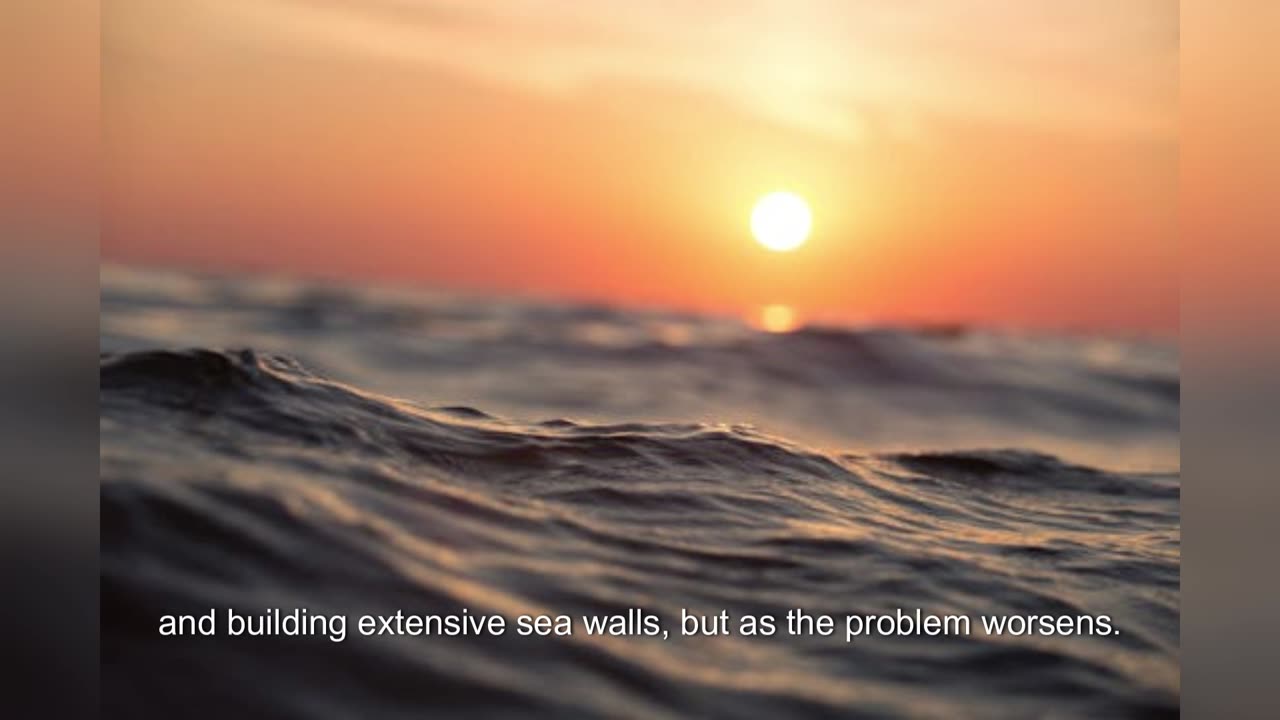Premium Only Content

Climate change is a global environmental factor that significantly affects sea level.
Climate change is a global environmental factor that significantly affects sea level. Since 1880, global average sea level has risen by about 21-24 cm, with 2022 setting a new record of 101.2 mm above 1993 levels. The rate of sea level rise is accelerating, doubling from 1.4 mm per year by in the 20th century to 3.6 millimeters per year from 2006 to 2015. The main drivers of this increase are the melting of ice and glaciers and the thermal expansion of seawater as it warms. Regional differences in sea level rise exist because of natural variability in the strength of winds and ocean currents, which affect how much and where the deepest layers of the ocean store heat. If we succeed in significantly reducing greenhouse gas emissions, US sea levels in 2100 are projected to average about 0.6 meters higher than they were in 2000. In a scenario with high greenhouse gas emissions and rapid glacier collapse , models predict that average sea level rise for the United States could be 2.2 meters by 2100 and 3.9 meters by 2150. Understanding and addressing climate change is critical to managing the risk posed by rising sea level.
Areas particularly vulnerable to sea-level rise include low-lying coastal areas, particularly tropical and subtropical river deltas, where large populations and important infrastructure meet. In particular, the coasts of the US, Asia and various islands face increased risk, not only from sea level rise from melting ice and thermal expansion of seawater, but also from an increase in storm surges and high-tide flooding. In addition, regions such as China, Bangladesh, India, Egypt, the Netherlands, the United States, Brazil, Australia, New Zealand and Pacific islands such as Tonga and Fiji have been identified as particularly vulnerable. Adaptation to sea-level rise can include measures such as raising coastal structures and building extensive sea walls, but as the problem worsens, the ongoing impact on society will be greater and the cost of response will increase. Understanding the challenges and implementing adaptation strategies is critical to protecting these areas.
-
 28:37
28:37
Ohio State Football and Recruiting at Buckeye Huddle
10 hours agoBold Predictions for the 2025 Ohio State Spring Game
5.22K -
 21:25
21:25
JasminLaine
12 hours agoMark Carney Gets Visibly ANGRY at Reporter—Poilievre BURIES Him! Then He Goes Into HIDING
3.5K9 -
 16:56
16:56
Clownfish TV
1 day agoDisney's DEATH by Tariffs? They DEPEND on China!
6.23K6 -
 11:30
11:30
IsaacButterfield
1 day ago $0.35 earnedThis Hate Speech Law Is RACIST To White People.
4.99K15 -
 14:57
14:57
BEK TV
1 day agoEP 6 - DUNSEITH DECLASSIFIED: RESPECTED NATIONAL MEDIA LEGAL EXPERT WEIGHS IN
6.88K -
 29:59
29:59
The Brett Cooper Show
3 days ago $15.05 earnedHow This Sparked A MASSIVE Parenting Debate Online | Episode 20
50.8K88 -
 17:55
17:55
DeVory Darkins
17 hours ago $21.87 earnedCNN crushed by pronouns as Trump scores HUGE VICTORY
74.2K77 -
 2:48:33
2:48:33
Barry Cunningham
18 hours agoWATCH LIVE: MY INTERVIEW WITH LARA TRUMP! AND TODAY'S NEWS ABOUT DEMOCRATS HATING AMERICA!
116K28 -
 3:12:15
3:12:15
TimcastIRL
11 hours agoLiberals BLAME TRUMP For NYC Tourist Helicopter Crash After Tragic Accident | Timcast IRL
274K181 -
 1:16:36
1:16:36
Glenn Greenwald
13 hours agoGlenn Takes Your Questions: On Banning Candidates in the Democratic World, Expanding Executive Power, and Trump's Tariffs | SYSTEM UPDATE #437
137K52